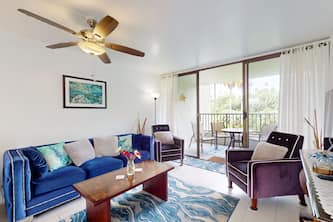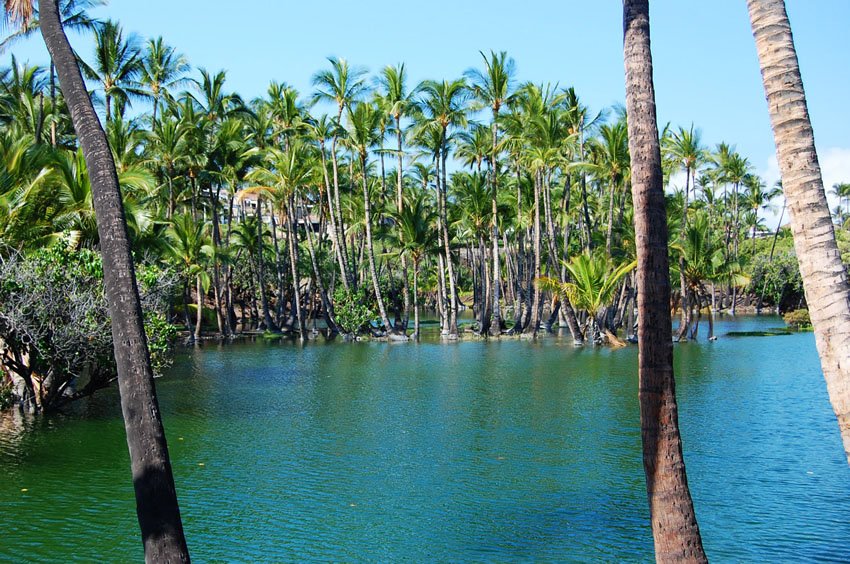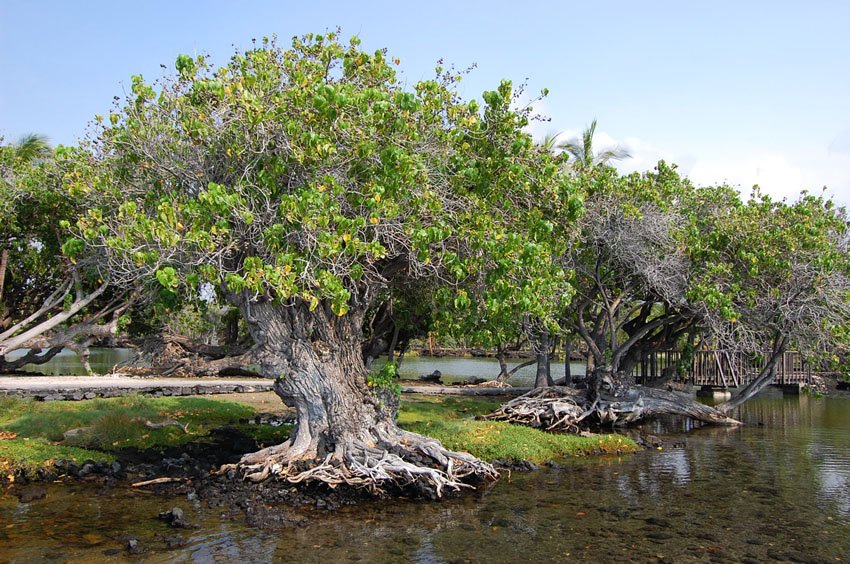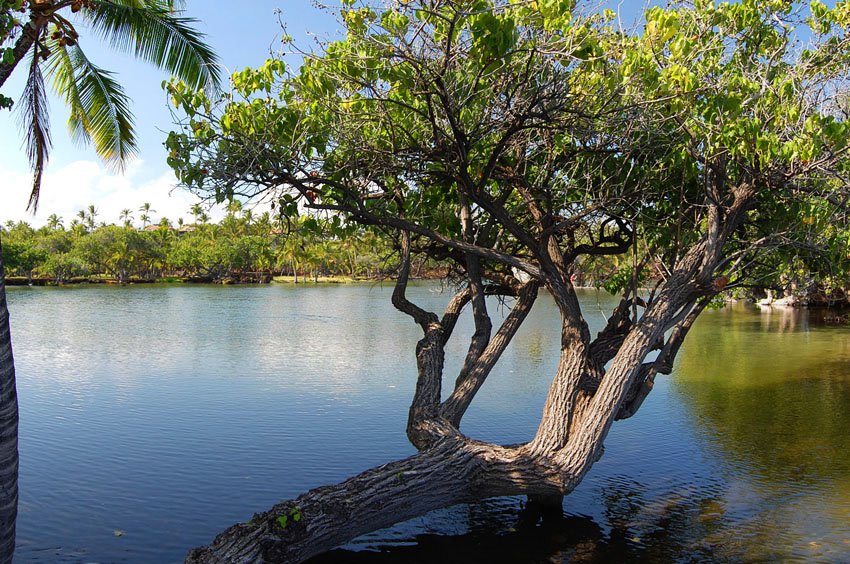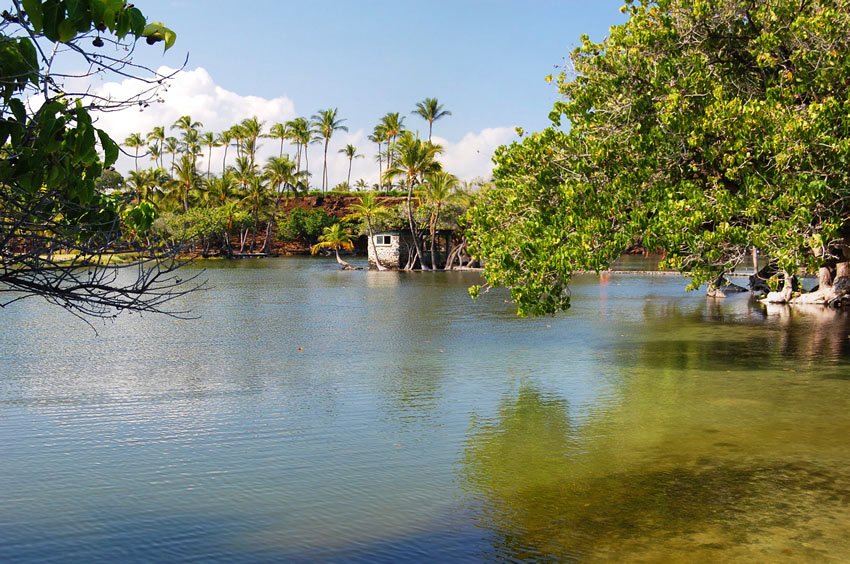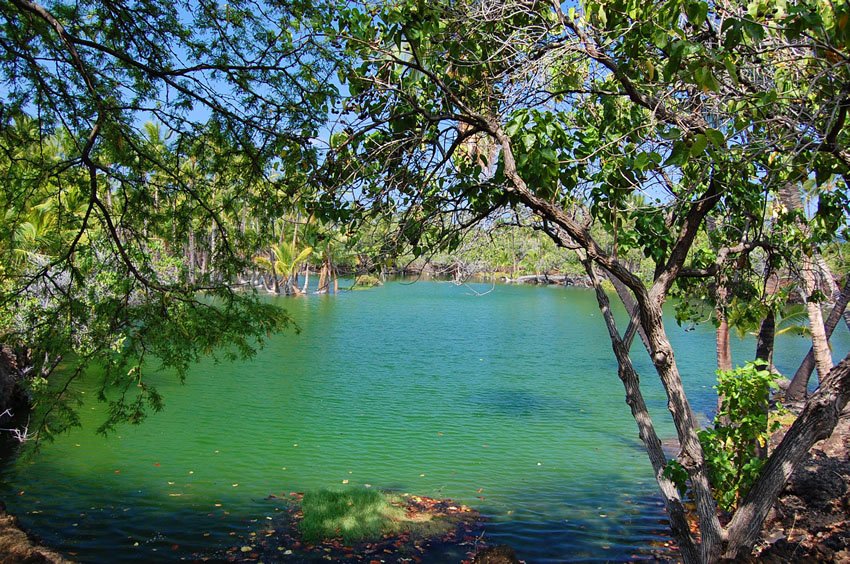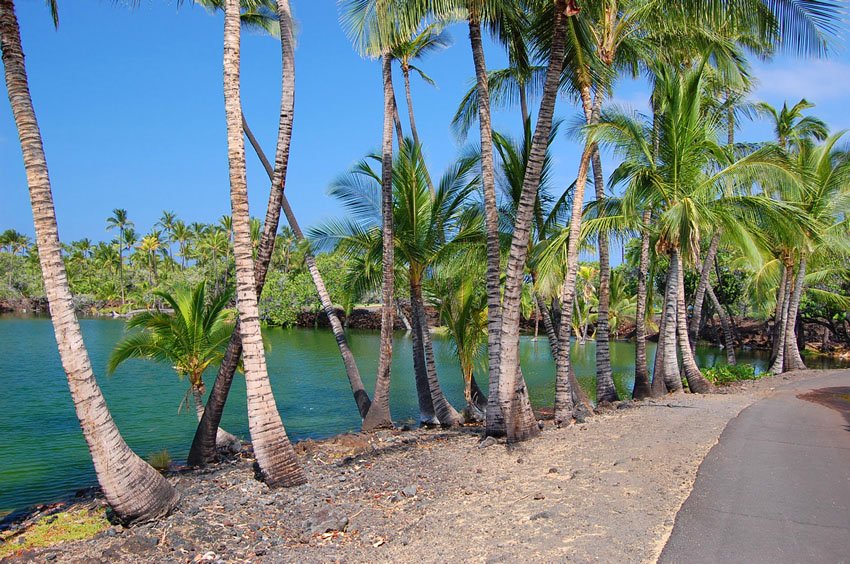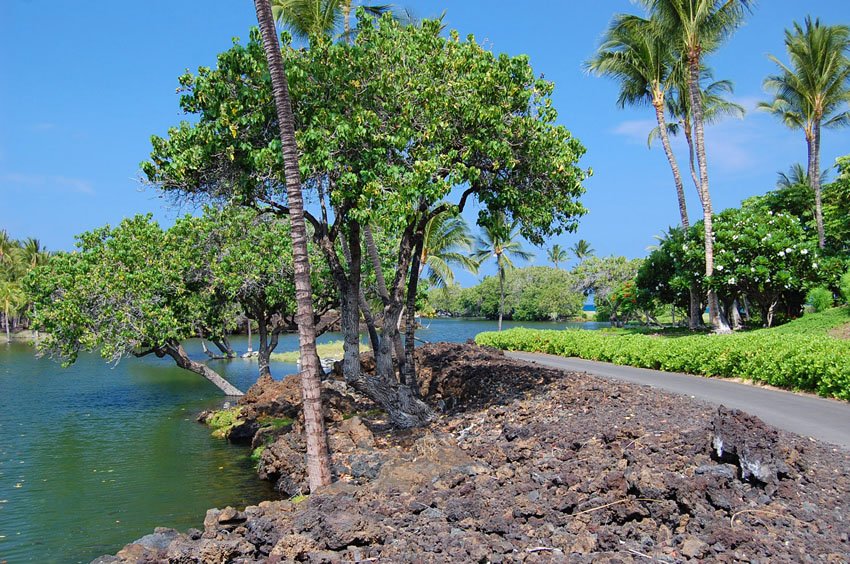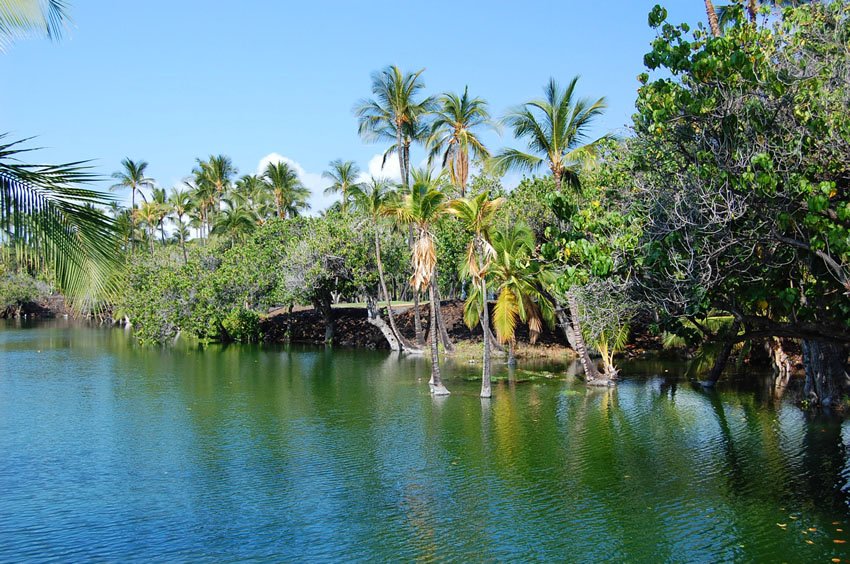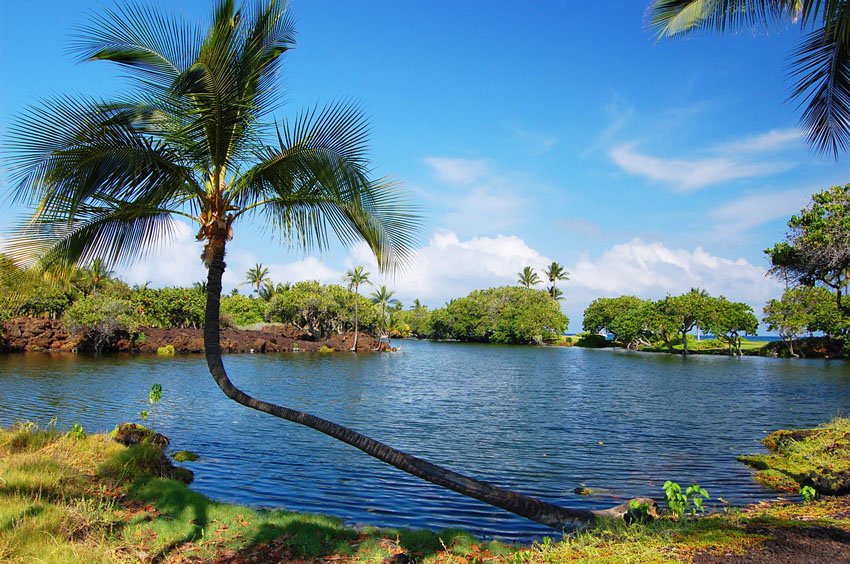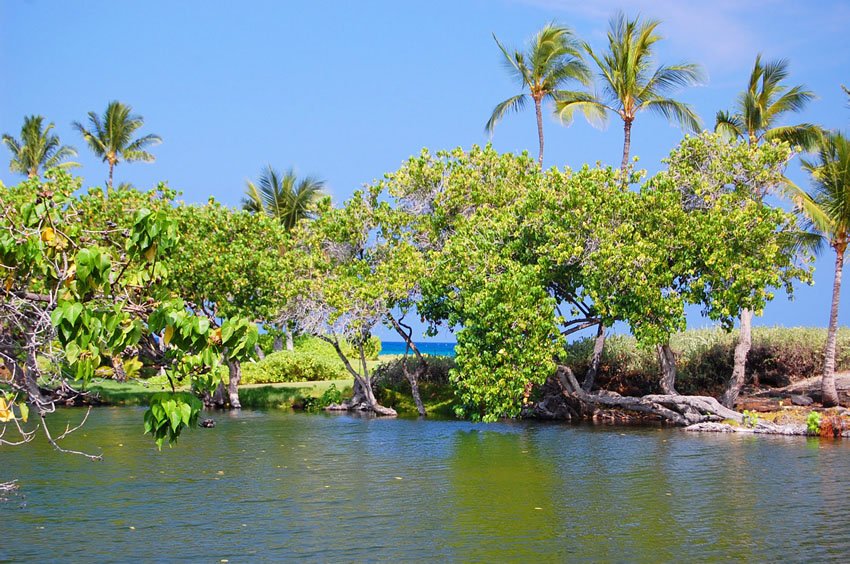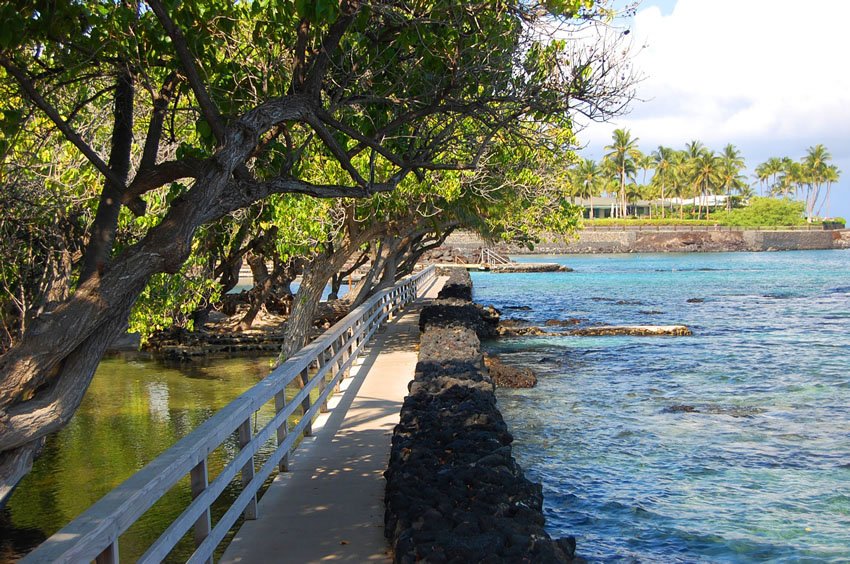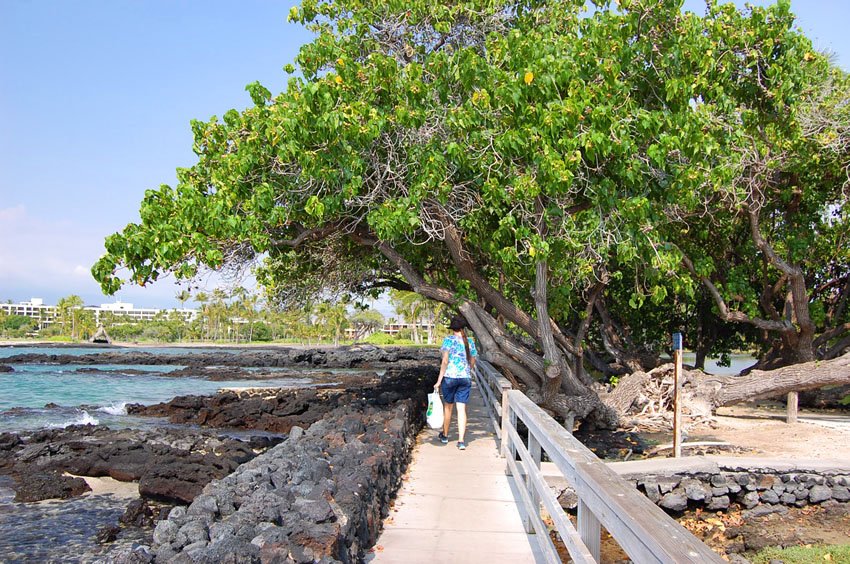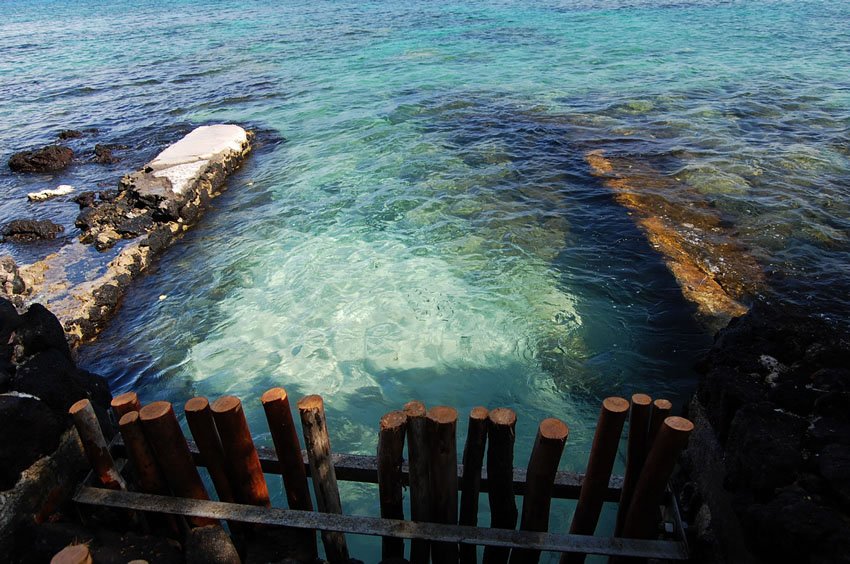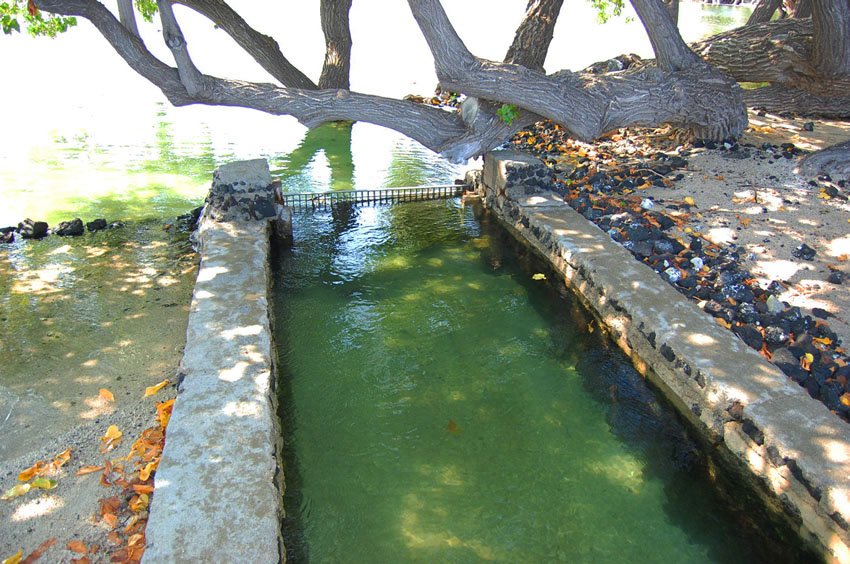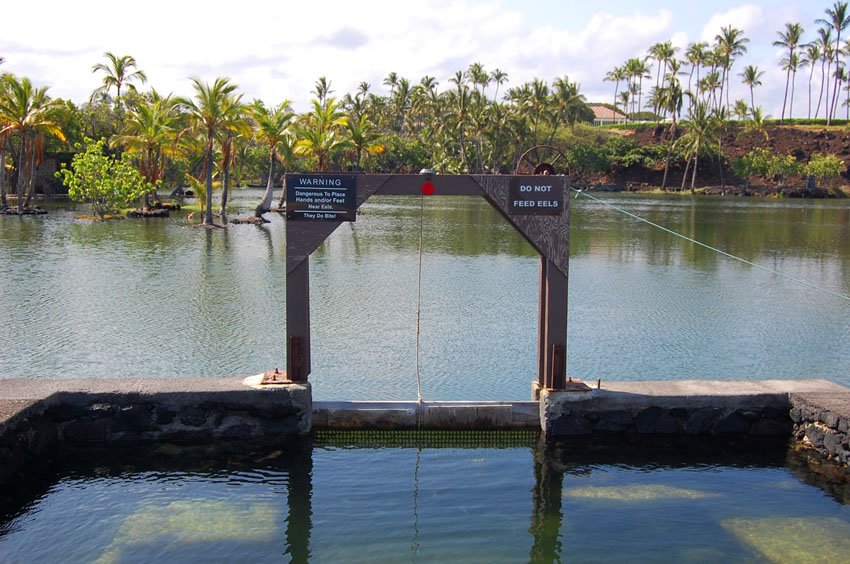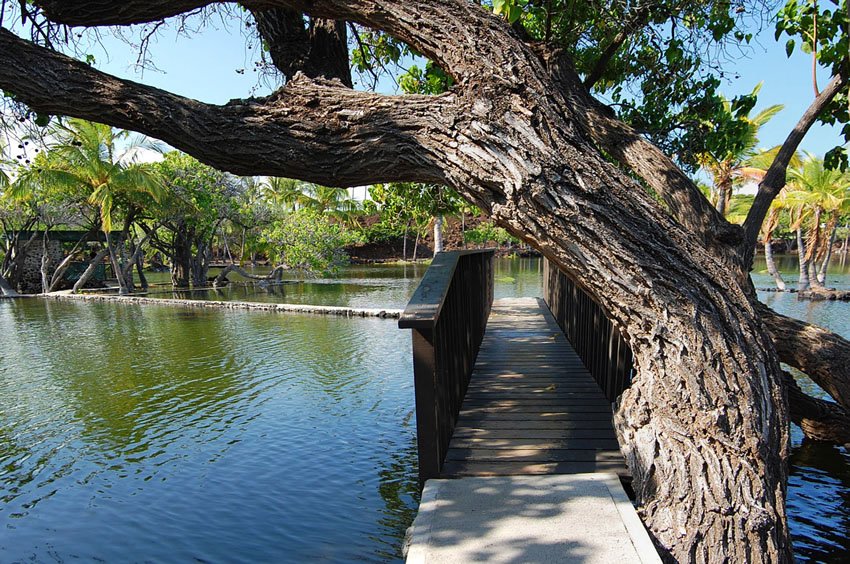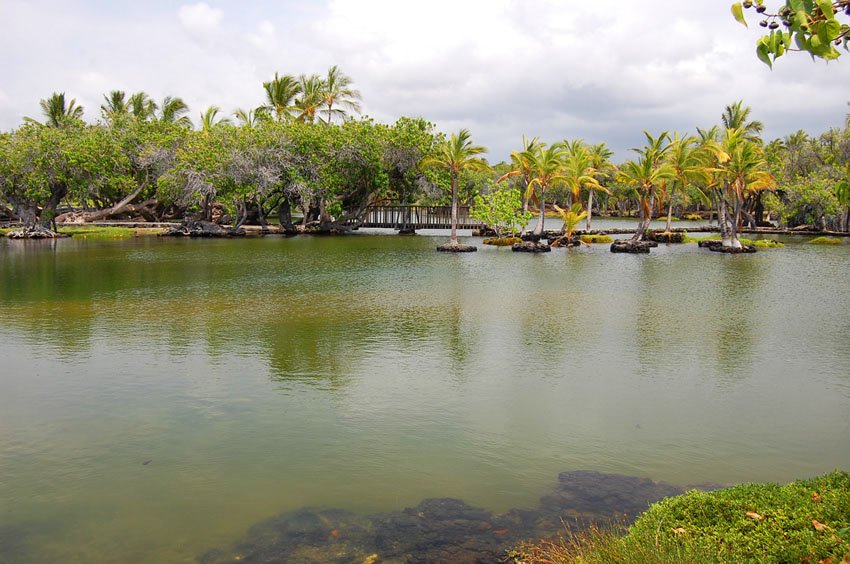Kalahuipua'a (Mauna Lani Fishponds)
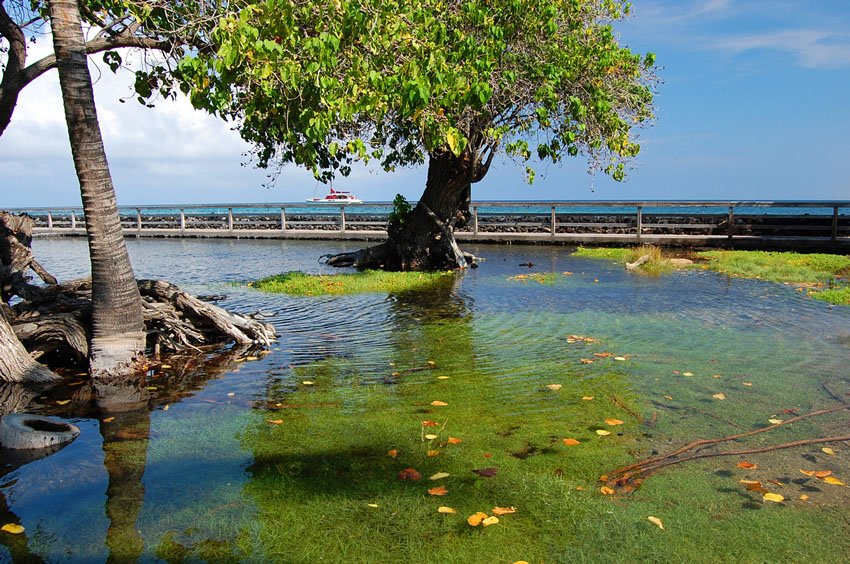
Kalahuipua'a Fishponds, also known as Na Loko I'a O Kalahuipua'a, are a network of ancient Hawaiian fishponds located along the Kohala Coast on the grounds of the Mauna Lani Resort. These historic ponds have been used for centuries to cultivate fish such as mullet, milkfish, and papio. Still functioning today, the ponds represent sustainable aquaculture practices of old Hawai'i and offer visitors a glimpse into traditional Hawaiian coastal engineering and food sovereignty.
Kalahuipua'a (Mauna Lani Fishponds), Big Island
These ancient Hawaiian fishponds (view panorama)×, located on the grounds of the Mauna Lani Resort on the Big Island's Kohala Coast, are producing fish up until today. There are seven fishponds: Kalahuipua'a, Waipuhi, Waipuhi Iki, Kahinawao, Hope'ala, Manoku and Milokukahi, with Lahuipua'a and Ka'aiopio as divisions of Kalahuipua'a.
Kalahuipua'a is the largest pond encompassing 4.6 acres and measuring up to 18 feet (5.5 m) in depth. In the old Hawaii, most fishponds were managed by the ali'i (chiefs), and most of the fish were consumed by them.
An educational plaque at the Mauna Lani fishponds reads:
"Since men first found them, the fishponds at Kalahuipa'a [name of the ahupua'a on which Mauna Lani sits] have been a delightful oasis along this arid coast. These brackish ponds are fed and cleansed by fresh water springs seeping into them and the tidal action of the sea. By modifying them and managing them wisely, the prehistoric Hawaiians were able to raise a variety of fish in these ponds. 'Ama'ama (mullet) and awa (milkfish) were the most commonly raised fish, but others such as papio (jack) kaku (barracuda) and puhi (eels) as well as 'opae (shrimp) lived here also. These ponds are among the few anywhere that are still being managed in much the same way as they were in ancient times. They are still producing fish."
Key Features of Kalahuipua'a Fishponds
- Seven ancient fishponds (view panorama) × : Includes Kalahuipua'a, Waipuhi, Waipuhi Iki, Kahinawao, Hope'ala, Manoku, and Milokukahi
- Functioning aquaculture: Fishponds are still producing fish using traditional water flow and gate systems
- Royal history: Once managed by ali'i (chiefs) and said to have belonged to King Kamehameha the Great
- Educational signage: Plaques along the trails explain fishpond history, construction, and species raised
- Sustainable design: Brackish water from freshwater springs and tidal ocean water sustains aquatic life
- Scenic walking trail: A paved path leads visitors around the fishponds with ocean and lava rock scenery
- Located at Mauna Lani Resort: Accessible to the public and maintained as a cultural resource
Frequently Asked Questions
Are the fishponds still in use today?
Yes, several ponds are still managed using traditional techniques and continue to produce fish like mullet and milkfish.
What is the historical significance of the ponds?
The ponds are ancient examples of Hawaiian aquaculture, demonstrating sustainable food systems and coastal engineering dating back centuries.
Where are the fishponds located?
They are on the grounds of the Mauna Lani Resort on the Kohala Coast of the Big Island. A paved trail winds around the ponds.
How large is the main fishpond?
Kalahuipua'a Pond is the largest, covering 4.6 acres and reaching depths of up to 18 feet (5.5 meters).
Were the ponds used by Hawaiian royalty?
Yes, the ponds were once under the stewardship of ali'i (chiefs) and are said to have been controlled by King Kamehameha the Great.












